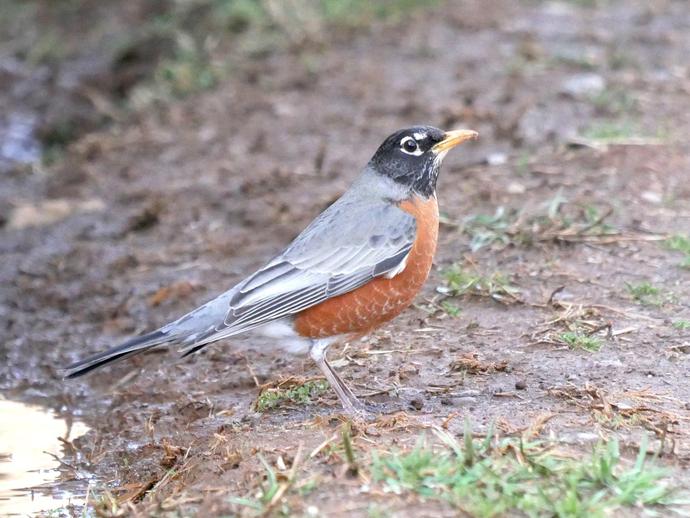March 24, 2021
It's time for today's edition of #BenInNature presented by our friends at Carter Bank & Trust!
The American robin (Turdus migratorius, truly one of the most unfortunate binomial names) is one of our most recognizable birds. It's also one of our most misunderstood!
If you were to ask a bunch of folks to name some signs that spring has arrived, there's a good chance that many would mention seeing the "first robin of spring." There's a widely-held belief that robins migrate in the winter and return just as spring arrives. However, if you live in the continental U.S., the robins have been here all year long! In fact, museum staff almost always spot a few robins each December during the annual Christmas Bird Count.
How did this rumor get started? It's likely because robins are a bit harder to find during the winter due to the availability of food. During spring, summer, and fall, robins tend to hunt for worms and insects on the ground, and you're likely to see them right in your front yard. In the winter, however, these food sources are scarce, so robins switch over to eating berries and other fruits, which causes them to spend a whole lot of time in the woods away from our prying eyes!
If you'd like to see some American robins during the winter, the best way to attract them is by planting American holly (Ilex opaca). It's native to the southeastern U.S., and the berries provide a great food source for robins and plenty of other birds once the weather turns cold.
ABOUT #BenInNature
Social distancing can be difficult, but it presents a great opportunity to become reacquainted with nature. In this series of posts, Administrator of Science Ben Williams ventures outdoors to record a snapshot of the unique sights that can be found in the natural world. New updates are posted Monday - Friday, with previous posts highlighted on the weekends. This series of posts is made possible thanks to the support of VMNH Corporate Partner Carter Bank & Trust (www.cbtcares.com)
NATURE PHOTO IDENTIFICATIONS
If you discover something in nature that you would like help identifying, be sure to message us right here on Facebook with a picture (please include location and date of picture) and we'll have our experts help you identify it!

 Hours & Admissions
Hours & Admissions Directions
Directions

